Kaffir lime is a citrus plant that belongs to the Rutaceae family. It is from Southeast Asia and is widely cultivated for its aromatic leaves and fruits. Kaffir lime leaves as a flavoring agent in various cuisines, especially Thai, Indonesian, and Malaysian dishes. Kaffir lime fruits have a bumpy green or yellow rind and a sour pulp that is rich in vitamin C and antioxidants. Kaffir lime fruits are used for making jams, pickles, sauces, and beverages. Kaffir lime also has medicinal and cosmetic properties, as it can help treat infections, inflammation, skin problems, and hair loss.
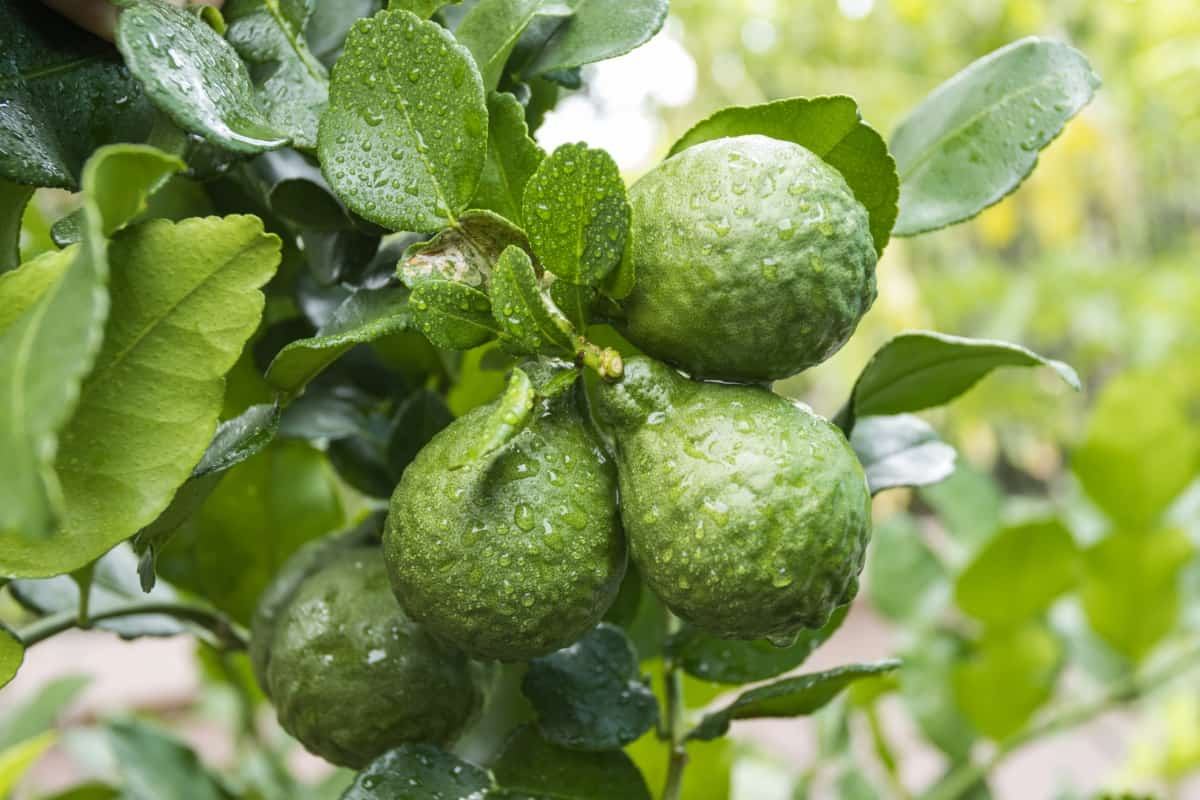
Kaffir lime farming is a profitable and sustainable business that offers a steady income for farmers. It is a tropical, subtropical climate with adequate sunlight, water, and soil fertility. Kaffir lime trees can be propagated through seeds or cuttings and can be planted in pots or on the ground. Regular pruning, fertilization, watering, and pest management are necessary for healthy growth and high yield. After 3-4 years, they can produce up to 50 kg of fruit per tree per year. Profit depends on market demand and the price of kaffir lime leaves and fruits.
The Role of Microclimate in Successful Kaffir Lime Cultivation
Kaffir lime trees, tropical plants that thrive in warm, humid, and sunny conditions, can be affected by microclimate. They can tolerate temperature, rainfall, and wind variations but may suffer frost damage, water stress, sunburn, or wind damage if the microclimate is too extreme. For optimal growth and yield, it is crucial to choose a suitable site with a favorable microclimate. Factors influencing microclimate include elevation, aspect, topography, and vegetation.
Elevation can provide lower temperatures and higher rainfall, while aspect can affect sunlight and heat. Topography can create microclimates by affecting air movement, drainage, and soil moisture. Vegetation can modify the microclimate by providing shade, reducing evaporation, increasing humidity, buffering temperature fluctuations, and protecting from wind. For example, planting kaffir lime trees under taller trees can create a microforest effect that mimics their natural habitat.
How to Prepare Soil for Thriving Kaffir Lime Trees
Kaffir lime trees require well-drained, sandy soil with a slightly acidic and neutral pH between 5.5 and 6.5. To prepare the soil:
- Test the pH and adjust it if necessary.
- Loosen the soil to a depth of at least 18 inches, improving drainage and aeration.
- Add organic matter like compost, manure, leaf mold, or grass clippings to improve soil structure, fertility, water retention, and microbial activity.
- Add fertilizer according to the label instructions, using a balanced fertilizer or a citrus-specific fertilizer with micronutrients like iron, zinc, and manganese.
- Dig a hole twice as wide and deep as the root ball of the tree, fill it with soil, and place the tree in the hole.
- Tamp down soil gently and water thoroughly.
Kaffir Lime Varieties
Kaffir limes are two main varieties: Citrus hystrix DC. (also known as makrut lime) and Citrus hystrix var. micrantha (also known as Mauritius papeda). Both produce aromatic leaves used in Asian cuisine but differ in fruit characteristics. Citrus hystrix DC. It produces green, bumpy fruits with a strong citrus flavor and fragrance but is sour and bitter.
In case you missed it: Lime Farming – Lemon Cultivation, Planting, Harvesting
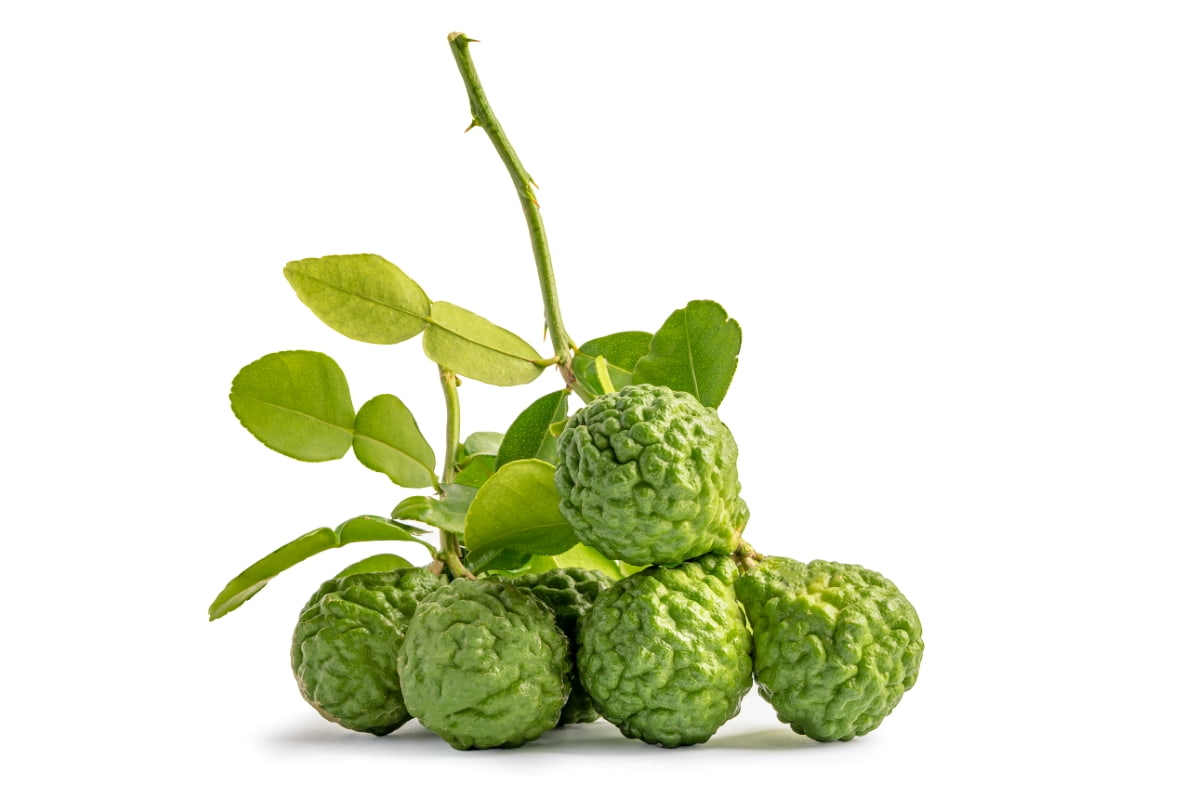
The rind is thick and contains oil glands for essential oil production. The pulp is dry and contains many seeds. Citrus hystrix var. micrantha produces smaller, yellow-green, smooth, thin-skinned fruits with a less aromatic rind but a juicy, sweet-tart pulp with few seeds.
Propagating Kaffir Lime Trees for Maximum Yield
Kaffir lime trees can be propagated through cuttings or seeds, but seed propagation is not recommended due to the potential for variable offspring. Cutting propagation is preferred as it produces identical clones of the parent plant. To propagate kaffir lime trees by cuttings, select healthy, mature branches from the parent plant, cut them at a 45-degree angle, remove leaves, and dip the ends in rooting hormone powder or gel to stimulate root formation and prevent fungal infections.
Insert the cuttings into moist, sterile potting mix or perlite in small pots or trays, space them 4 inches apart, cover them with plastic bags or domes, and place them in a warm, bright location, out of direct sunlight. Mist the cuttings daily and water them when the medium feels dry. Check for root development after 4 to 6 weeks, and if they resist, they have rooted. Transplant the rooted cuttings into larger pots filled with well-drained, sandy soil, and grow them in a greenhouse or indoors until ready for outdoor planting.
Step-By-Step Guide to Kaffir Lime Planting
- Put your kaffir lime tree in full sun, with adequate drainage and shelter from high winds. Since kaffir lime trees may grow to 35 feet tall and wide, the location should have ample room for them.
- As indicated above, test and correct the soil pH and loosen and enrich it with organic matter and fertilizer.
- Dig a hole as broad and deep as your kaffir lime tree root ball. Fill the hole with dirt and place the tree with the graft union above the ground. Gently tamp and moisten the dirt.
- Cover the tree base with mulch, leaving a few inches around the trunk. Mulch retains moisture, suppresses weeds, and cools soil.
- Support the tree with stakes to avoid leaning or cracking. Use a solid stake higher than the tree and bind it loosely to the trunk using cloth or rubber.
Intercropping Strategies with Kaffir Lime
Intercropping is the practice of growing multiple crops together in the same space, either simultaneously or sequentially. It can increase crop diversity, improve soil health, enhance pest and disease resistance, reduce weed competition, and maximize land use efficiency. Kaffir lime trees can be intercropped with various crops, depending on climate, soil, and market conditions. Legumes, such as beans, peas, lentils, and peanuts, can fix nitrogen and enrich soil, providing protein-rich food for humans and animals.
In case you missed it: Acid Lime Cultivation Practices Information
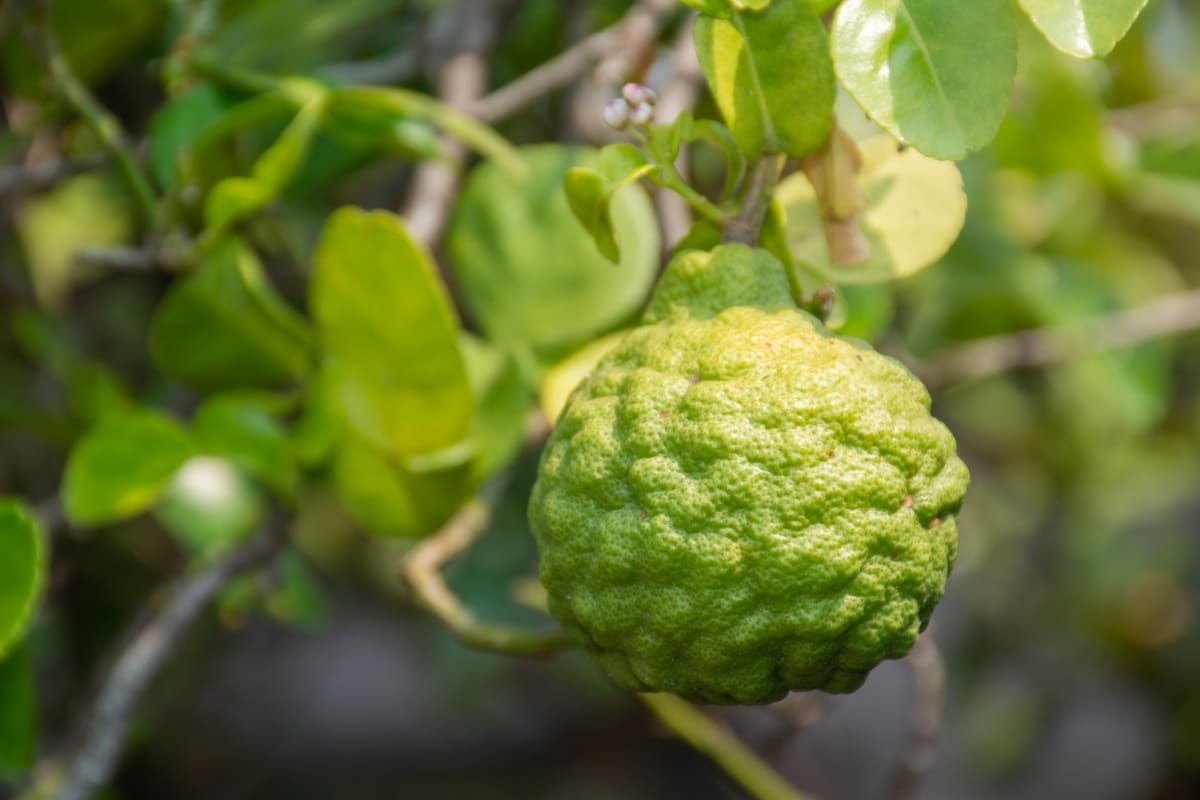
Vegetables like tomatoes, peppers, eggplants, cucumbers, and squash can benefit from the shade and moisture provided by kaffir lime trees. Herbs like basil, mint, lemongrass, and cilantro can add flavor and aroma to kaffir lime leaves, repel insects, and attract beneficial pollinators. Flowers like marigolds, zinnias, sunflowers, and the cosmos can add color and beauty and deter pests.
Irrigation Techniques for Kaffir Lime Trees
Kaffir lime trees are drought-tolerant, but they need regular watering to produce healthy fruits and leaves. The best irrigation technique for kaffir lime trees is to water them deeply and infrequently, allowing the soil to dry out between waterings. This will prevent root rot and salt accumulation in the soil.
A good rule of thumb is to water kaffir lime trees once a week in the summer and once every two weeks in the winter, depending on the weather and soil conditions. A drip irrigation system or soaker hose may irrigate the root zone without soaking the leaves or trunk. Organic mulch around the tree’s base conserves moisture and reduces weeds.
Pruning Techniques for Healthy Kaffir Lime Trees
Pruning kaffir lime trees is not necessary, but it can help to shape the tree, remove dead or diseased branches, and improve air circulation and light penetration. Pruning can also encourage new growth of leaves, which are highly valued for their aroma and flavor. The best time to prune kaffir lime trees is in late winter or early spring before the new growth starts.
You can use sharp and clean pruning tools to make clean cuts at an angle, just above a bud or a branch collar. You can remove up to one-third of the tree’s canopy, but avoid cutting into the main trunk or removing too many branches at once. You can also thin out some of the inner branches to open up the center of the tree and allow more light and air to reach the lower branches.
The Role of Bees in Kaffir Lime Pollination
Kaffir lime trees are self-pollinating, meaning they do not need another tree or insect to produce fruits. However, bees can play a beneficial role in kaffir lime pollination by transferring pollen from one flower to another, increasing the chances of fruit set and quality. Bees are also important for the pollination of other plants in the garden, such as vegetables, herbs, and flowers.
Therefore, attracting bees to your kaffir lime tree can have positive effects on your overall garden health and productivity. You can attract bees to your kaffir lime tree by planting bee-friendly flowers nearby, such as lavender, rosemary, sage, thyme, mint, borage, calendula, sunflower, and zinnia. You can also provide a source of water for bees, such as a birdbath or a shallow dish with pebbles or marbles.
Companion Planting in Kaffir Lime Orchards
Companion planting is the practice of growing plants that benefit each other, such as repelling pests, attracting beneficial insects, improving soil quality, or enhancing flavor. It can be applied to kaffir lime orchards to create a diverse ecosystem that supports tree health and productivity.
In case you missed it: Maximizing Yields and Profit from Sweet Lime Sustainably: A Comprehensive Guide
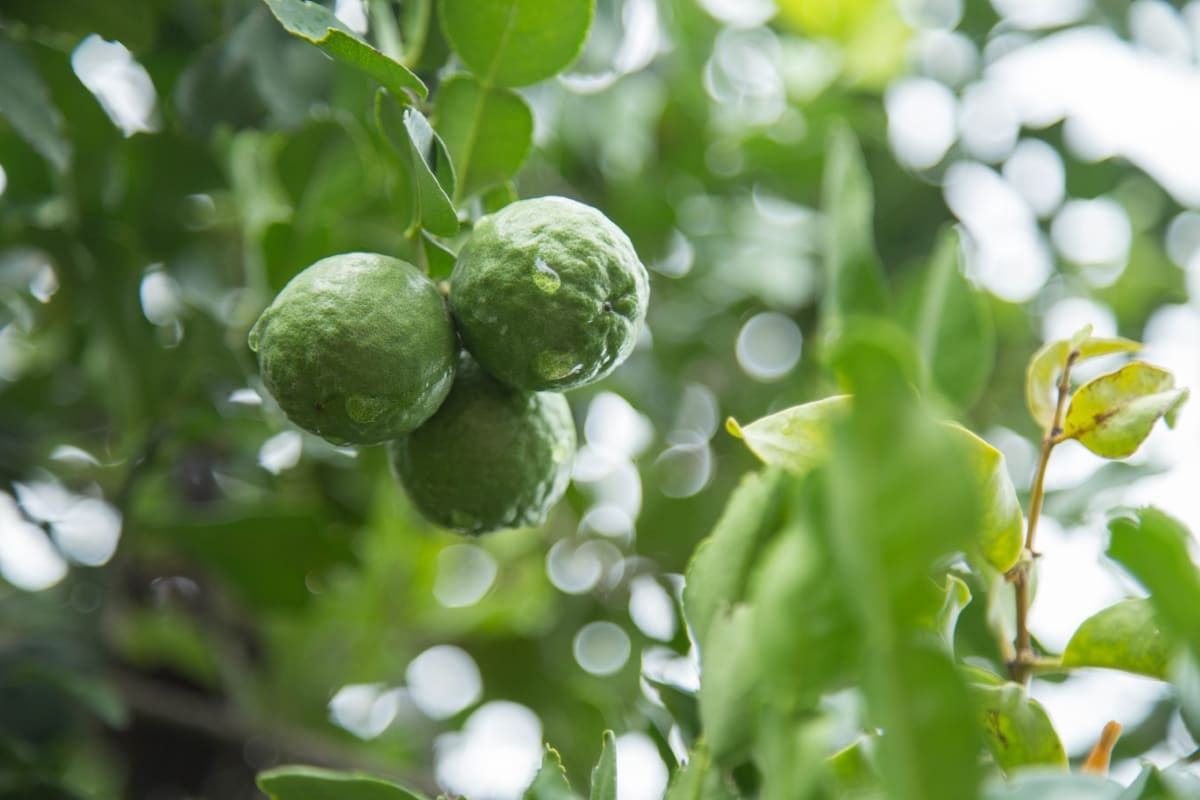
Some effective companion plants include basil, which repels pests and enhances the flavor of kaffir lime leaves, marigold, which attracts beneficial insects; and garlic, which repels soil-borne pests. And lemongrass, which repels insects and adds a citrusy flavor to kaffir lime leaves. These plants help create a harmonious ecosystem that supports tree health and productivity.
Grafting Techniques for Kaffir Lime Trees
Grafting is a technique that connects two plants to grow as one. It can be used to propagate kaffir lime trees or improve their performance by using different rootstocks. Grafting can also create multi-grafted trees with different types of citrus fruits. Common techniques include grafting a cleft, inserting scions into an aperture, T-budding, and whip and tongue grafting.
Cleft grafting involves vertical cuts in the rootstock stem, inserting scions with at least two buds, and wrapping the graft union with grafting tape or wax to prevent infection. T-budding inserts a single bud from the scion into a T-shaped cut, with a thin slice of bark and wood attached. Whip and tongue grafting involves matching diagonal cuts in the rootstock and scion stems, interlocking the stems with a tongue-shaped cut.
Pest and Disease Management in Kaffir Lime Cultivation
Although kaffir lime trees are resistant to pests and diseases, common issues can still affect them. Ants, cottony cushion scale, mealybugs, spider mites, leaf miners, whiteflies, greasy spot fungus, foot rot, citrus canker, and Huanglongbing are some of the pests and diseases that can affect kaffir lime trees. Ants can protect and farm aphids, mealybugs, scale insects, and damage kaffir lime roots.
Controlling these pests can be achieved through ant baits, barriers, or natural repellents. Mealybugs can cause yellowing, curling, dropping, stunted growth, and reduced fruit quality. Spider mites can cause yellowing, bronzing, and dropping of leaves. Leaf miners can cause distortion, curling, and dropping of leaves, reduced photosynthesis, and growth.
Whiteflies can cause yellowing, curling, and dropping of leaves, reduced growth, and reduced yield. Greasy spot fungus can cause brownish-yellow spots, premature leaf drop, and reduced photosynthesis and growth. Foot rot can cause decay and cracking of roots and trunk, wilting, yellowing, and dropping of leaves. Citrus canker can cause defoliation, dieback, fruit drop, and reduced fruit quality.
When and How to Harvest Kaffir Limes
Kaffir limes are small, green citrus fruits used for their zest and juice. Harvested when 4-6 cm in diameter and dark green, they can be cut from the stem with a sharp knife or gently pulled from the branch. They can be stored in the refrigerator for up to two weeks or frozen for longer storage. The zest or juice can also be dried and stored in airtight containers.
Yield of Kaffir Lime Tree
The kaffir lime tree’s yield depends on factors like age, size, health, pruning, climate, soil, water, and fertilizer conditions. A mature tree can produce 20-30 fruits per year, but some may produce more or less. To increase yield, choose a sunny, well-drained location, water regularly, avoid overwatering or waterlogging, fertilize with a balanced citrus fertilizer, prune the tree lightly every year to remove dead or diseased branches, and protect it from frost, pests, and diseases by covering it with a frost cloth or netting, inspecting it regularly, and applying treatments as needed.
Kaffir Lime Tree Care
The Kaffir lime tree is a tropical plant that thrives in warm and humid conditions. It requires 6-8 hours of direct sunlight for healthy growth and prefers a well-drained soil mix with a slightly acidic pH range between 6.0 and 7.0. It can be grown indoors near a south-facing window or under artificial lights.
In case you missed it: How to Grow a Finger Lime Tree: Planting, Propagation, Care for Citrus Australasica/Caviar Lime
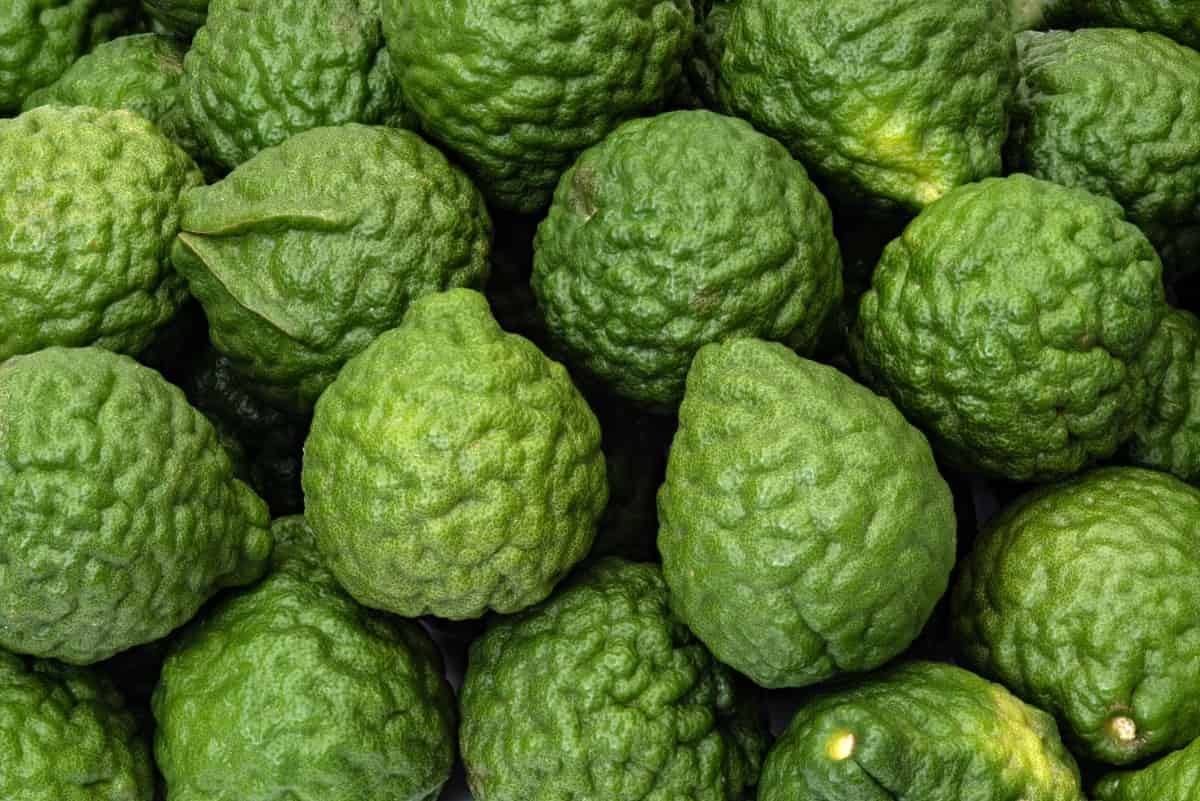
Regular watering is necessary to keep the soil evenly moist but not soggy, with a focus on overwatering or underwatering to avoid stress and damage. A balanced citrus fertilizer is recommended every 2-3 months, with organic fertilizers like fish emulsion or seaweed extract once a month for additional nutrients.
Kaffir Lime Farming Cost
Kaffir lime cultivation involves obtaining seeds or cuttings from nurseries, online sources, or local farmers, with prices varying based on quality and quantity. Soil and fertilizer can be used or created, with citrus potting mix or fertilizer costing around $20 or $25, respectively. Water and irrigation can be supplied from natural sources or artificial means, with efficient systems like drip kits or sprinklers costing around $50 or $100.
Labor and equipment are employed for tasks like planting, watering, and harvesting, with wages of $10 per hour or $50 per day. The marketing and profit of kaffir limes can be achieved by setting a pricing strategy that covers costs and ensures a profit margin.
Kaffir Lime Farming Profit
Kaffir lime farming profits are influenced by various factors, including the yield of the plants, the quality of the fruits and leaves, the demand and supply of kaffir limes in the market, and the price you charge for your products. A mature kaffir lime tree can produce 20-30 fruits and 100-150 leaves per year, with a farm of 100 kaffir lime trees yielding 2000-3000 fruits and 10,000-15000 leaves per year.
The quality of your kaffir limes depends on factors such as plant variety, health, harvesting and storage methods, and product freshness. The demand and supply of kaffir limes depend on factors like seasonality, popularity, competition, and customer preferences. The price of your kaffir limes depends on factors like production cost, product quality, market demand, and customer bargaining power. For instance, if you sell a pound of kaffir limes for $5 and produce it for $2, make a profit of $3 per pound.
Growing Kaffir Lime Organically
Kaffir lime can be grown organically using natural methods and materials without synthetic chemicals like pesticides, herbicides, fungicides, or fertilizers. This method improves plant health and quality by enhancing resistance to pests and diseases and preserves the environment by reducing soil erosion, water pollution, and greenhouse gas emissions.
Furthermore, it reduces the need for expensive inputs and attracts more customers by meeting their demand for organic products. To grow kaffir lime organically, follow guidelines like choosing certified organic seeds or cuttings, using organic soil mixed with natural amendments, using organic fertilizers, using organic pest control methods, and using organic disease control methods.
In case you missed it: Top 15 Steps to Boost Lemon Yield: How to Increase Fruit Size, Production, and Quality
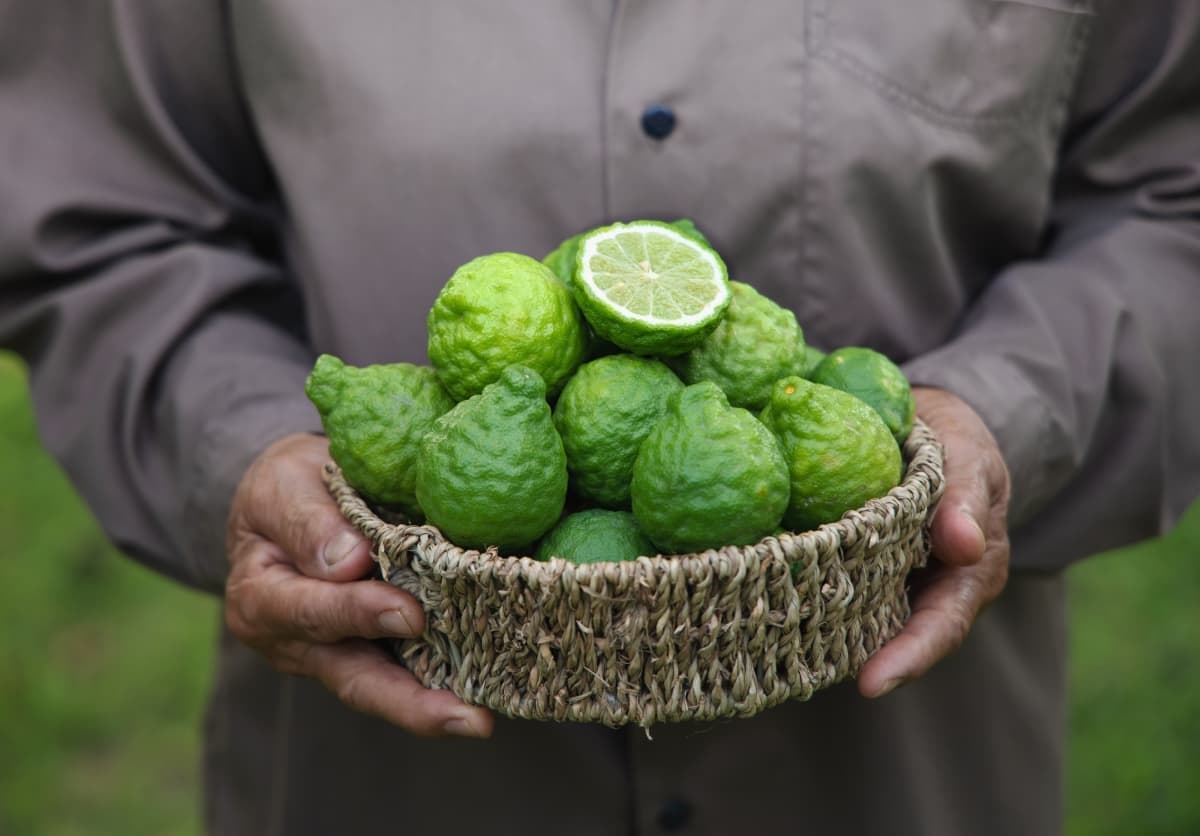
Conclusion
Successfully cultivating Kaffir Limes involves choosing suitable varieties, proper planting, and meticulous care. The farming cost, influenced by factors like seeds, soil, water, labor, and equipment, requires strategic management. Selling the produce to various markets ensures profitability. In essence, Kaffir Lime farming demands careful planning, dedication, and a keen business approach.
- Types of Pesticides Used in Agriculture: A Beginner’s Guide
- Economical Aquaculture: A Guide to Low-Budget Fish Farming
- 15 Common Planting Errors That Can Doom Your Fruit Trees
- How to Make Houseplants Bushy: Effective Tips and Ideas
- Innovative Strategies for Boosting Coconut Pollination and Yield
- Pollination Strategies for Maximum Pumpkin Yield
- The Complete Guide to Chicken Fattening: Strategies for Maximum Growth
- Natural Solutions for Tulip Problems: 100% Effective Remedies for Leaf and Bulb-Related Issues
- Revolutionizing Citrus Preservation: Towards a Healthier, Greener Future
- Natural Solutions for Peony Leaf and Flower Problems: 100% Effective Remedies
- Maximizing Profits with Avocado Contract Farming in India: A Comprehensive Guide
- Natural Solutions for Hydrangea Problems: 100% Effective Remedies for Leaf and Flowers
- The Ultimate Guide to Choosing the Perfect Foliage Friend: Bringing Life Indoors
- From Sunlight to Sustainability: 15 Ways to Use Solar Technology in Agriculture
- The Ultimate Guide to Dong Tao Chicken: Exploring from History to Raising
- The Eco-Friendly Makeover: How to Convert Your Unused Swimming Pool into a Fish Pond
- Mastering the Art of Delaware Chicken Farming: Essentials for Healthy Backyard Flocks
- 20 Best Homemade Fertilizers for Money Plant: DIY Recipes and Application Methods
- How to Craft a Comprehensive Free-Range Chicken Farming Business Plan
- Brighten Your Flock: Raising Easter Egger Chickens for Beauty and Bounty
- How to Optimize Your Poultry Egg Farm Business Plan with These Strategies
- Subsidy for Spirulina Cultivation: How Indian Government Schemes Encouraging Spirulina Farmers
- Ultimate Guide to Raising Dominique Chickens: Breeding, Feeding, Egg-Production, and Care
- Mastering the Art of Raising Jersey Giant Chickens: Care, Feeding, and More
- Ultimate Guide to Raising Legbar Chickens: Breeding, Farming Practices, Diet, Egg-Production
- How to Raise Welsummer Chickens: A Comprehensive Guide for Beginners
- How to Protect Indoor Plants in Winter: A Comprehensive Guide
- Ultimate Guide to Grow Bag Gardening: Tips, Tricks, and Planting Ideas for Urban Gardeners
- Guide to Lotus Cultivation: How to Propagate, Plant, Grow, Care, Cost, and Profit
- Agriculture Drone Subsidy Scheme: Government Kisan Subsidy, License, and How to Apply Online
- Ultimate Guide to Raising Araucana Chickens: Breed Profile, Farming Economics, Diet, and Care
- Bringing Hydroponics to Classroom: Importance, Benefits of Learning for School Students
- Ultimate Guide to Raising Polish Chickens: Breed Profile, Farming Economics, Diet, and Care
- Ultimate Guide to Raising Australorp Chickens: Profile, Farming Economics, Egg Production, Diet, and Care
- Silkie Chicken Farming: Raising Practices, Varieties, Egg Production, Diet, and Care
- Sussex Chicken Farming: Raising Practices, Varieties, Egg Production, Diet and Care